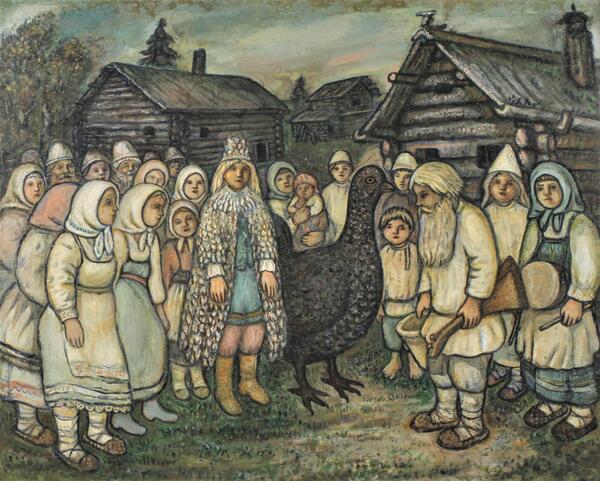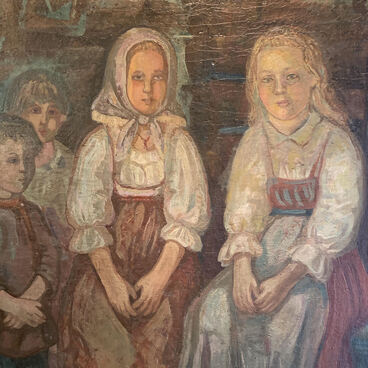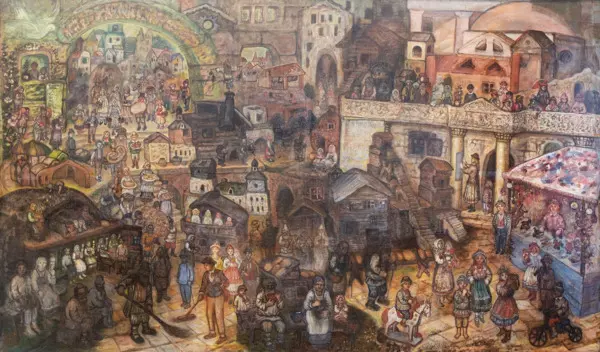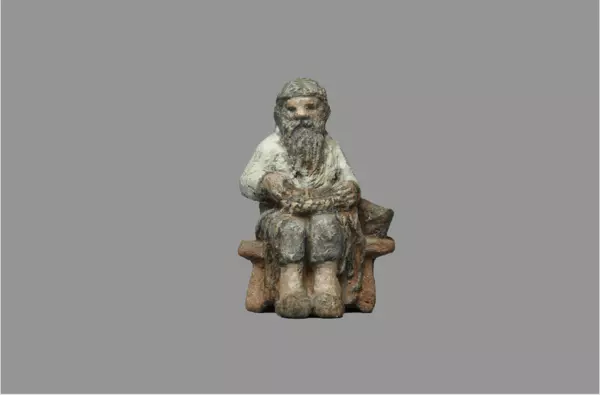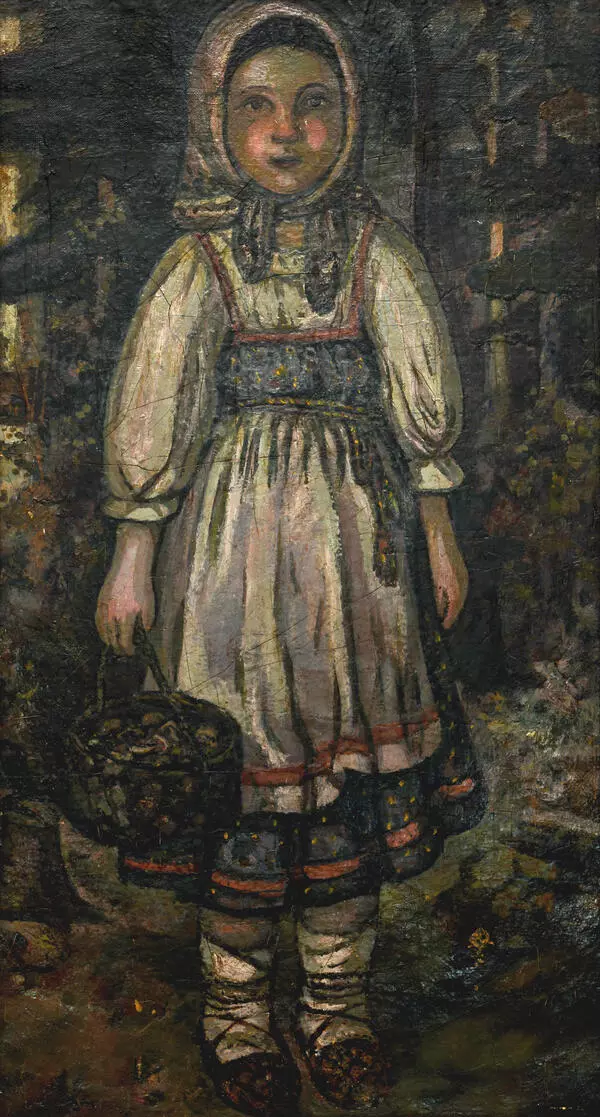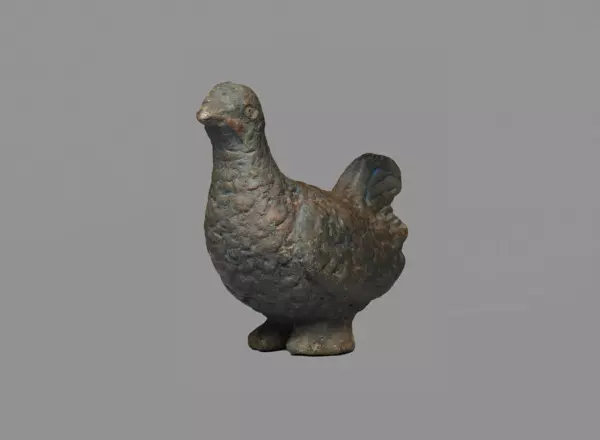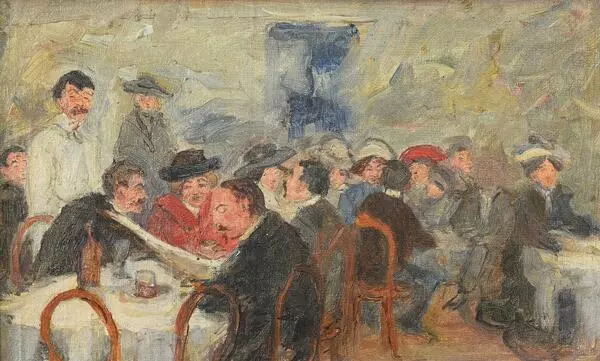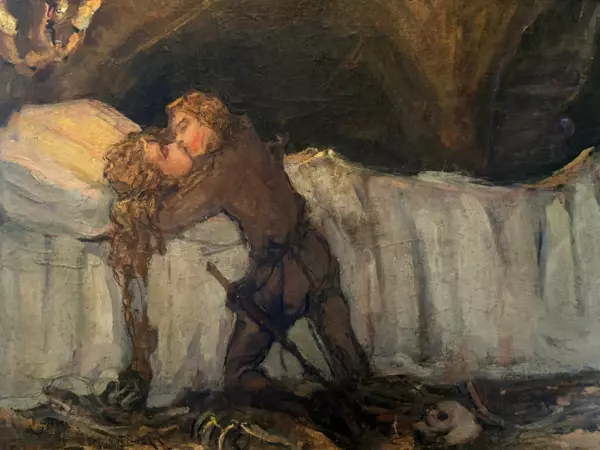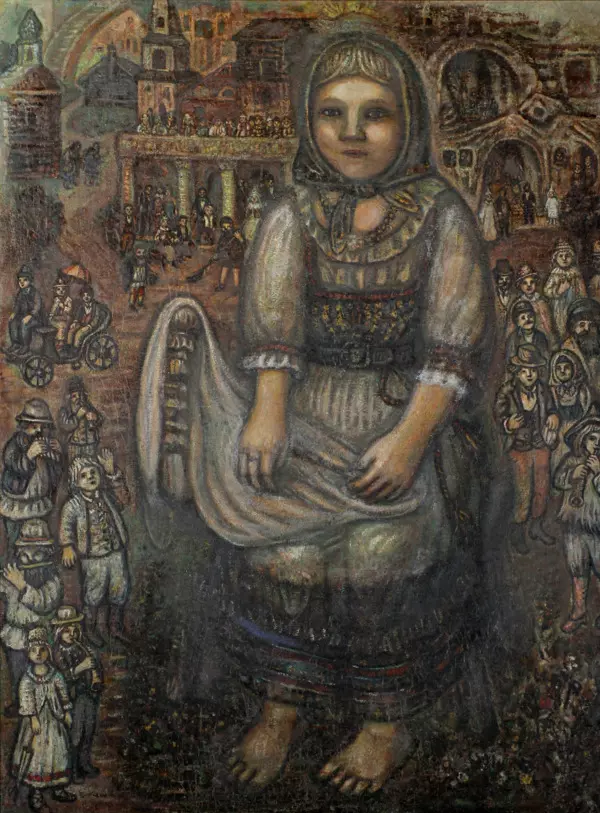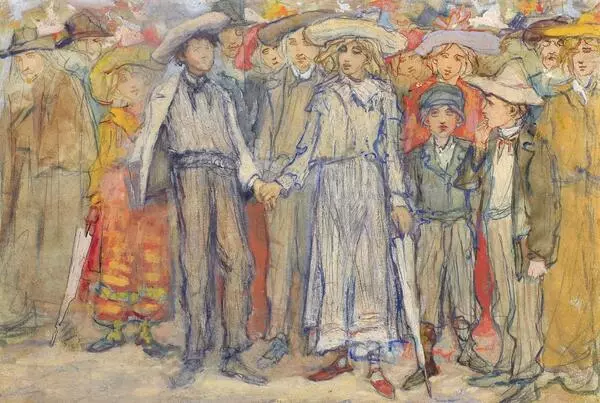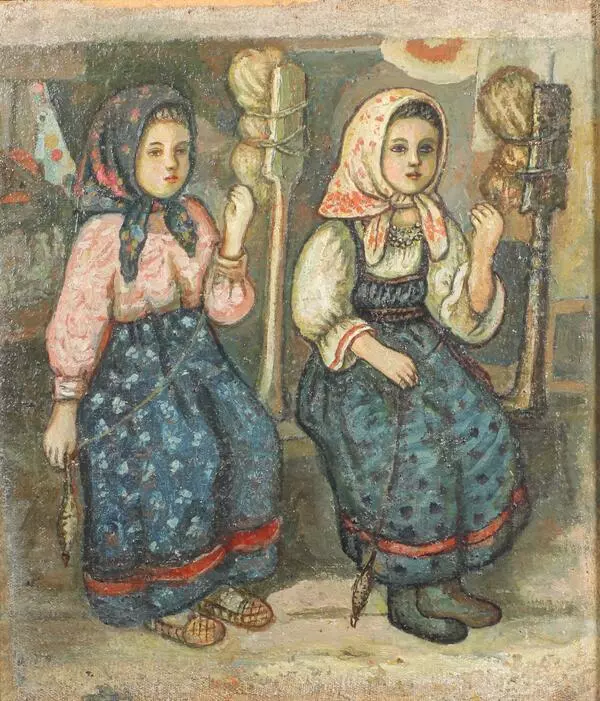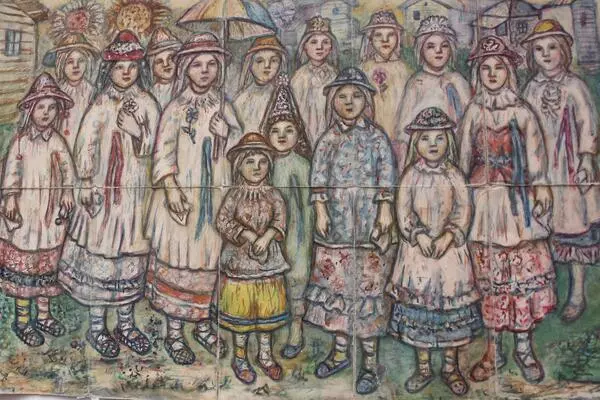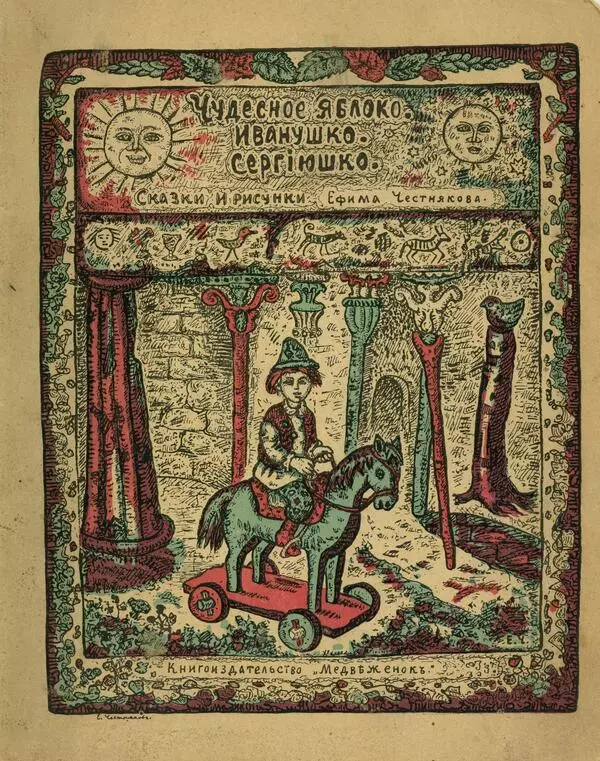Yefim Chestnyakov’s works of art clearly reflect his holistic worldview and showcase the interaction between and integration of all the art forms. The artist understood the great power wielded by visual arts and literature, and thus chose to combine them together. He often created paintings and drawings for his theater performances and illustrated his literary works. Only once you have familiarized yourself with his fairy tale-novel “The tale of Stafiy, the King of Black Grouse” can you understand the story behind the painting “The black grouse king”.
The protagonist of this literary work is the son of peasants, Stafiy. He is the village inventor who goes in search of a bride on a flying apparatus. During his journey, he ends up in forgotten villages in virgin forests; loses his flying apparatus, and winds up in the Black Grouse kingdom. In order to find his flying craft, he dresses up as the Black Grouse king and travels to a village on a large black grouse.
The painting depicts a scene that corresponds to an excerpt in the novel. Peasants have gathered in the center of the village to see a performance. “And suddenly they saw a human, flying on a big black grouse. The people parted to let the bird land on a grassy plot. Safiy climbed off, stood near the black grouse on the grass and said
“On this wide meadow,
I am the Black Grouse king.
Have you seen the flying craft of
the Black Grouse king? ”
Old man Yakov then took off his hat, bowed to the King and stated “Greetings to you, the great Black Grouse king! We are relieved to hear that the owner of the flying apparatus has been found”.’
A warm summer evening is depicted on the painting ‘The black grouse king’. Peasant men and women, as well as village youngsters and maidens are standing in the center of a village. The entire work of art conveys feelings of kindness, harmony and otherworldly tranquility. The painting’s color scheme, based on emerald-green hues, accentuates the quiet mood of yearning for a song. In the mind of an inhabitant of northern woodlands, the human world coexisted with the natural one. In Yefim Chestnyakov’s works of art, people understand the language of animals and birds, respect these creatures and help them out. And, in turn, these beasts show kindness. It is very clear what concepts lie behind this art work — happiness, a virtuous life and a union between a man and Mother Earth, which nourishes him, as well as the artist’s dream of a peaceful coexistence of human beings and the natural world.
The protagonist of this literary work is the son of peasants, Stafiy. He is the village inventor who goes in search of a bride on a flying apparatus. During his journey, he ends up in forgotten villages in virgin forests; loses his flying apparatus, and winds up in the Black Grouse kingdom. In order to find his flying craft, he dresses up as the Black Grouse king and travels to a village on a large black grouse.
The painting depicts a scene that corresponds to an excerpt in the novel. Peasants have gathered in the center of the village to see a performance. “And suddenly they saw a human, flying on a big black grouse. The people parted to let the bird land on a grassy plot. Safiy climbed off, stood near the black grouse on the grass and said
“On this wide meadow,
I am the Black Grouse king.
Have you seen the flying craft of
the Black Grouse king? ”
Old man Yakov then took off his hat, bowed to the King and stated “Greetings to you, the great Black Grouse king! We are relieved to hear that the owner of the flying apparatus has been found”.’
A warm summer evening is depicted on the painting ‘The black grouse king’. Peasant men and women, as well as village youngsters and maidens are standing in the center of a village. The entire work of art conveys feelings of kindness, harmony and otherworldly tranquility. The painting’s color scheme, based on emerald-green hues, accentuates the quiet mood of yearning for a song. In the mind of an inhabitant of northern woodlands, the human world coexisted with the natural one. In Yefim Chestnyakov’s works of art, people understand the language of animals and birds, respect these creatures and help them out. And, in turn, these beasts show kindness. It is very clear what concepts lie behind this art work — happiness, a virtuous life and a union between a man and Mother Earth, which nourishes him, as well as the artist’s dream of a peaceful coexistence of human beings and the natural world.

